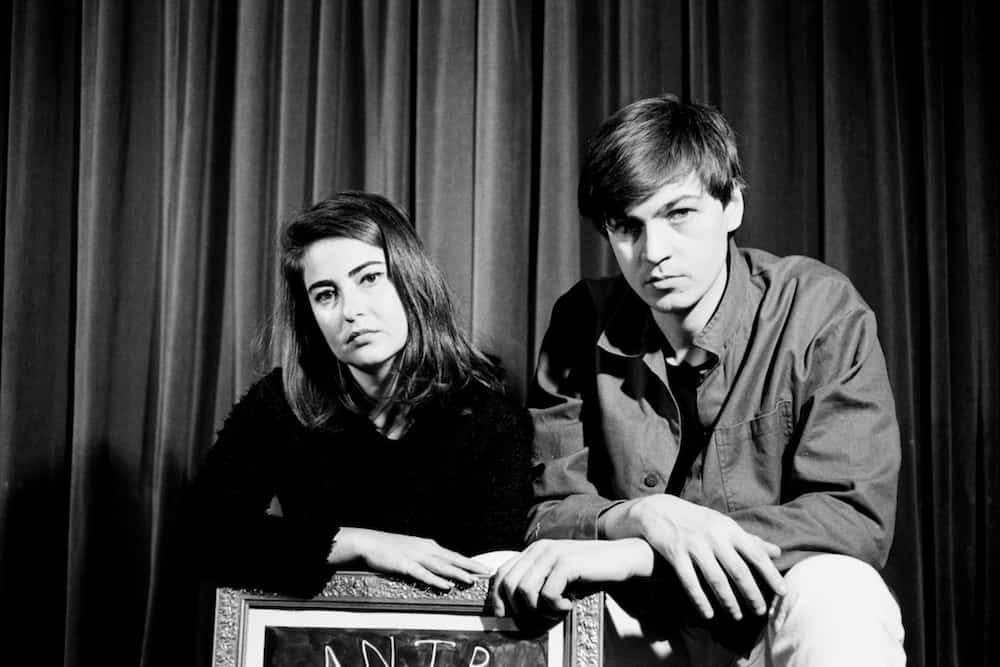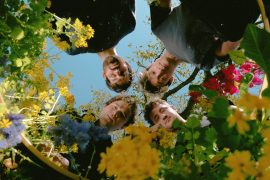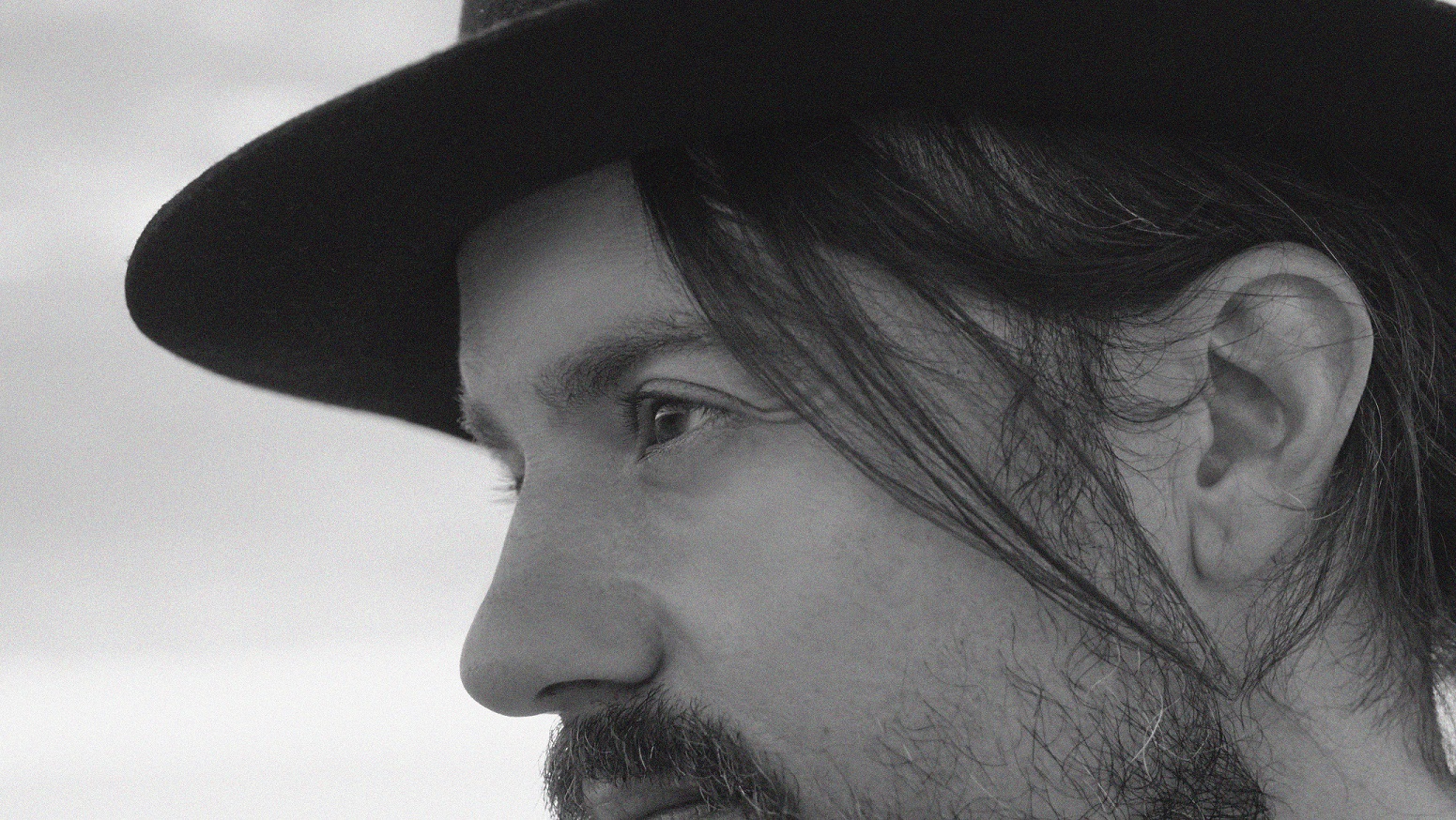With their debut album ‘Mantra Moderne, Kit Sebastian tap into Anatolian folk, French yéyé and Brazilian tropicalia to refresh what you think you know about sixties psychedelia and sleuth soundtracks.
Listen: Mantra Moderne – Kit Sebastian
There is a holistic approach that can be applied when reflecting on Mantra Moderne, the debut album by London duo Kit Sebastian. It’s one that would begin by appraising Kit Martin and Merve Erdem of their globetrotting sensibilities; noting that the songs incorporate traditions as diverse as Brazillian Tropicalia, French yéyé, American swing and Anatolian rock; detailing how ouds evoke the Samas of Rumi; how Erdem’s singing warbles between the prevailing Turkish and French adoptions of Sixties popular music; how the electric guitars and Farfisa organs transmute this record into a Jean-Luc Goddard film score; how a Sao Paulo sonic wears Mary Quant noir.

The record is awash with lo fi tape hiss and enthralling live archive artifacts as well as distortions and EQs embedded into the aural quality. Immediately any room is transported back in time, simultaneously draining colour but injecting with style a record that very well might title France Gall au Moyen-Orient!
This stylistic direction is not without fault, however. Last year, Laure Briard attempted much of the same jetset tape hiss techniques on her own EP, Coração Louco, while heading in a more occidental direction and delving into Bossa Nova and Fado of Brazil and Portugal, respectively. The same problem was presented: too much instrumentation and the record would sound crowded, too little music and the record would be sparse and impossible to swallow, like trying to breathe in a vacuum. Briard erred on the latter side, in order to showcase her cooing, chiming, charming vocals. For Merve Erdem, her voice is simply another texture to Kit Sebastian’s layers, adding a more convincing Turkish influence than the negated hand drums.
But, stylized and compressed, the native darbukas and tablas throughout the record are reduced to a mute. Most rock bands with percussion feature drums higher in the mix in order to keep the overall beat simple, rendering the addition redundant, an irritating development—the last time people produced percussion right, it was 1977. Polyrhythm being a basic tenant of non-Occidental folk music, the attenuation if not downright erasure of percussion on the mix depreciates the instrumentation in favour of the image- A tinny, exotic sound was decreed more important than a fully rich stereo experience.
The slow rollout of each song allows for a tempo not unlike A Bout du Souffle or Que la bête meure, which, while revealing a non-ironic love for French cinema, the cinema of nothing happening, (otherwise known as “Seinfeld didn’t invent shit, they just added comedy to the script”), also belies a sense of the “auteur.” Kit Sebastian reminds me of art duo and friends from college, Richie Benson, known for their guggle goo developed a collaborative effort of pass-on, pass-off pop art creativity that was impossible to confuse and awash of Andy Warhol and Jean Dubuffet influence. In the same vein, Kit Sebastian is a duo auteur, using self-avowed spontaneity to craft music that peruses the bazaar.
Now the Gods and pop stars
Enslave man ruled by tsars
Charles the Great, urinate
I’m in love with the Soviet state
– “Tyranny 20,” Kit Sebastian
Of course, it’s hard to consider most of the vocals as anything other than a textural layer when completely oblivious to the semantic significance of the Turkish language, the majority of this record’s lyrical content. Translating the titles implies melancholia and metaphysical propositions (“Yürüdüm, Büyüdüm, Çürüdüm” translating loosely to “I walked, I grew, I wither”) endemic from the nascent psychedelia of the Sixties to present. Only the cut “Tyranny 20” offers a hazy statement of pop culture royalty and Cold War seduction. As it were, “Charles the Great, urinate” is a whimsical image of an “I, robot” statement and cuts through Erdem’s native, hypnagogic whisper.
And while the Anatolian percussion is a nonplus and the lyrics made to mood light, the balalaikas and ouds shift the needle and allow for a sonic that mistakes, at first, for an unconventionally tuned electric guitar. In a way this is both a commendation for the diversity of an electric guitar and the innate aura of an oud or balalaika—and no I’m not just looking for excuses to say balalaika—because it’s the ouds which arrive at the ears first; from cuts Senden Başka,” to “Pangea,” they work with woodwinds and Farfisa organs to set the scene of this acid-induced police procedural with in the walls of a Kasbah. The balalaika takes it from there on “Yanımda Kal,” deepening the foundation upon which the oud and the many organs stand as the lo-fi hi-fi sensibilities do the rest.
Kit Sebastian showcase a style done quite well, managing to outfit folk musicology dyed of disparate ideas such as tropicalia and Anatolian folk with sleuthing horn sections and Farfisa organs in retro worldbeat fashion, an infinitely hard achievement worthy of some form of commendation.Have them score the next James Bond film immediately.
— —

Connect to Kit Sebastian on
Facebook, Instagram, Twitter
Discover new music on Atwood Magazine
? © Munéyuki Sugiyama








